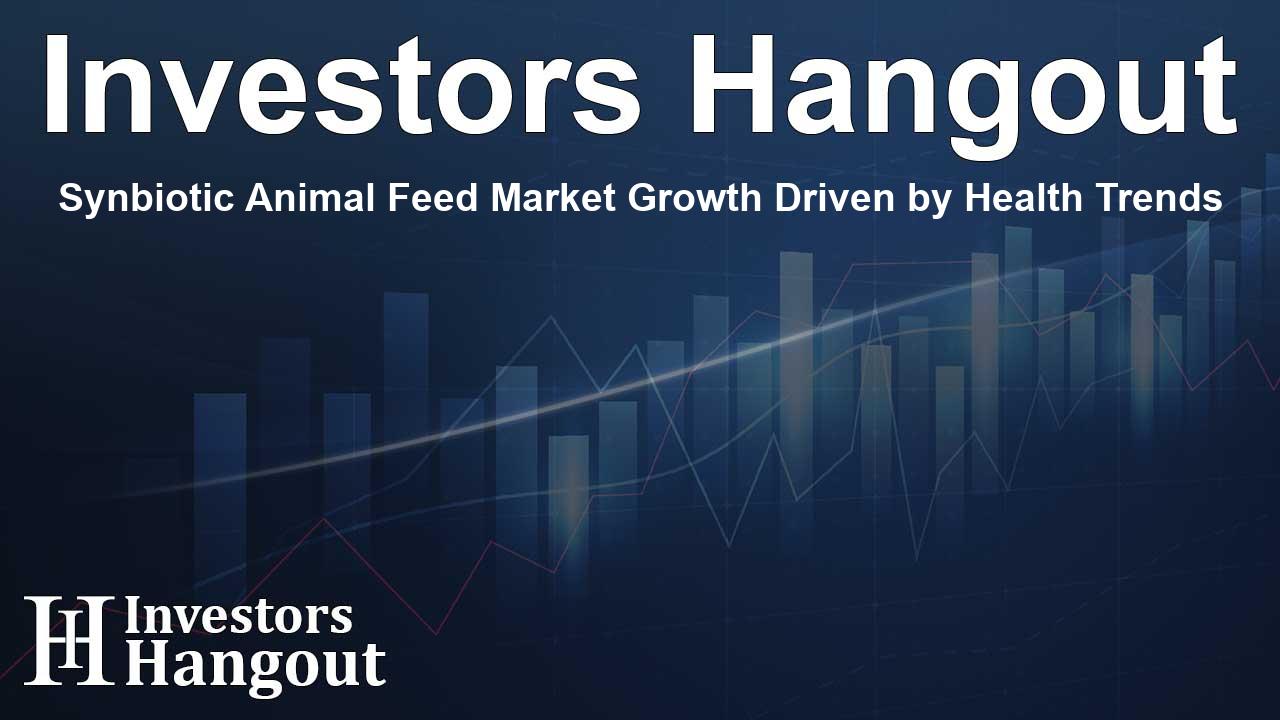Synbiotic Animal Feed Market Growth Driven by Health Trends

Growing Importance of Synbiotic Animal Feed in the Market
The worldwide synbiotic animal feed market is rapidly evolving, projected to escalate from a value of USD 420 million in 2024 to USD 890.1 million by 2034. This impressive growth, showing a compound annual growth rate (CAGR) of 7.8%, is primarily fueled by rising consumer demand for antibiotic-free livestock products and a heightened awareness of food safety. Moreover, a growing inclination towards sustainable and ethical farming practices is playing a crucial role in this market transformation.
Benefits of Synbiotics in Animal Nutrition
Synbiotics, which blend prebiotics and probiotics, are becoming increasingly popular in the animal feed sector. Their effectiveness in addressing antibiotic resistance concerns while promoting better animal health and performance is driving their adoption among farmers and livestock producers. These innovative feeds play an essential role in maintaining a balanced gut microbiota among animals, enhancing digestion, nutrient absorption, and overall immune function. As consumers increasingly favor natural and antibiotic-free meat options, synbiotic feed additives are swiftly becoming the go-to solution in the animal nutrition industry.
Market Dynamics and Growth Factors
Several factors are propelling the growth of the synbiotic animal feed market:
- Consumer Demand for Antibiotic-Free Products: The rising consumer preference for antibiotic-free animal products is a primary driver for this market. Antibiotic resistance is a growing global concern, prompting consumers to seek foods that are labeled as antibiotic-free, a standard that can be achieved through the use of synbiotics.
- Enhancing Livestock Health and Productivity: Synbiotics have been shown to improve gut health in livestock, which enhances their overall digestion and immune functions. Healthier animals are less susceptible to diseases, subsequently reducing the need for pharmaceutical treatments.
- Adopting Precision Nutrition: The livestock sector is increasingly embracing precision nutrition, which customizes animal diets. Synbiotics complement this approach by offering tailored health benefits, helping farmers to optimize animal well-being while lowering feeding costs.
- Aquaculture Growth: The aquaculture industry is notably expanding, presenting a significant market for synbiotic feeds. As demand increases for fish protein, synbiotics are critical in supporting the health of farmed fish, enhancing their immunity and gut health.
- Technological Advancements in Feeding Systems: The modern agricultural landscape relies on advanced feeding systems that adapt feed distribution to the specific needs of individual animals, promoting tailored feeding strategies, including the precise administration of synbiotics.
Regional Insights
The demand for synbiotic animal feed is robust across various regions, notably in the USA, Brazil, India, and China, where growth prospects remain strong. The USA and Brazil are particularly noteworthy as they are poised to see significant market expansion, with Brazil projected to have the highest CAGR at 8.1%, driven by its strong livestock industry.
Competitive Landscape
The competitive environment in the synbiotic animal feed sector is fierce, with leading players such as Cargill, Vetafarm, and Protexin Veterinary leading the charge. These companies actively invest in research and development to innovate sustainable feed solutions that cater to the demands of both the market and regulatory standards.
Strategies of Major Companies
These industry leaders are employing various strategies to enhance their market position, including significant acquisitions. For instance, Cargill's acquisition of Delacon in 2022 has allowed them to broaden their range of natural feed alternatives that aim to replace traditional antibiotics.
Conclusion
The global synbiotic animal feed market stands ready for substantial growth, driven by shifts in consumer expectations for healthier and more ethically produced animal products. As the industry progresses, synbiotics are likely to play an increasingly vital role in ensuring the health of livestock and meeting the demands of the modern consumer.
Frequently Asked Questions
What is the synbiotic animal feed market forecast?
The synbiotic animal feed market is projected to grow from USD 420 million in 2024 to USD 890.1 million by 2034, with a CAGR of 7.8%.
Why is there a growing demand for antibiotic-free meat?
Consumers are becoming more aware of food safety and health concerns regarding antibiotic resistance, pushing them towards antibiotic-free livestock products.
How do synbiotics benefit animal health?
Synbiotics promote better gut health, improve digestion and nutrient absorption, enhance immune functions, and reduce disease incidences in livestock.
What role does technology play in the market growth?
Technological advancements in feeding systems enable a more tailored approach to feeding animals, ensuring optimal health and nutrition, and enhancing productivity.
What are the major regions driving the synbiotic animal feed market?
The USA, Brazil, India, and China are key regions with strong consumption rates and robust growth prospects in the synbiotic animal feed market.
About Investors Hangout
Investors Hangout is a leading online stock forum for financial discussion and learning, offering a wide range of free tools and resources. It draws in traders of all levels, who exchange market knowledge, investigate trading tactics, and keep an eye on industry developments in real time. Featuring financial articles, stock message boards, quotes, charts, company profiles, and live news updates. Through cooperative learning and a wealth of informational resources, it helps users from novices creating their first portfolios to experts honing their techniques. Join Investors Hangout today: https://investorshangout.com/
Disclaimer: The content of this article is solely for general informational purposes only; it does not represent legal, financial, or investment advice. Investors Hangout does not offer financial advice; the author is not a licensed financial advisor. Consult a qualified advisor before making any financial or investment decisions based on this article. The author's interpretation of publicly available data shapes the opinions presented here; as a result, they should not be taken as advice to purchase, sell, or hold any securities mentioned or any other investments. The author does not guarantee the accuracy, completeness, or timeliness of any material, providing it "as is." Information and market conditions may change; past performance is not indicative of future outcomes. If any of the material offered here is inaccurate, please contact us for corrections.